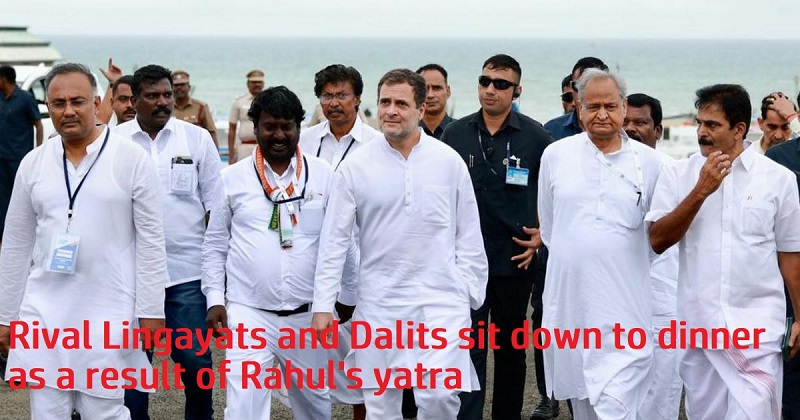
Lingayat and Dalit communities, divided by caste conflicts since the early 1990s, were brought together in Badanavalu hamlet as Congress leader Rahul Gandhi’s Bharat Jodo Yatra wound its way deeper into Karnataka.
Over the years, the simmering animosity between the communities resulted in the deaths of three persons, which greatly improved societal harmony.
A previously undeveloped road that connected Lingayat neighbourhoods and the Dalit colony was created as a result of the Yatra, assisting in tying the two communities together. KPCC leaders made the decision to clear the bushes, de-weed the run-down road, lay interlocking bricks, and call it ‘Bharat Jodo Yatra Road’ before Rahul visited Badanavalu Khadi Gramodyog. They also painted a handful of the poor people’s dwellings.
The moment Rahul Gandhi entered the village and spoke to more than 2,000 families, it was historic. He and other Congressmen officially opened the route alongside youngsters from both neighbourhoods. When Rahul toured the Lingayat and Dalit neighbourhoods, he met the residents and shook their hands. He participated in shramdaan to paint the school building and paid respects to Gandhiji’s bust.
On the eve of Gandhi Jayanti, at a temporary dining hall set up at the Khadi Gramodyog Center, the Congress leader strengthened inter-caste trust and unity while dining with members of the Lingayat and Dalit groups and village leaders. Repairs were made to the Center, which had fallen into disrepair.
A villager named Basavanna stated they are pleased with Rahul’s visit. In 1927 and 1932, Mahatma Gandhi paid visits to the Dalit colony. Gandhi visited the hamlet to promote khadi and women’s empowerment, according to Shiva Murthy, another local, and the government should consider along similar lines to give unemployed youths jobs.
The Yatra, according to KPCC President DK Shivakumar, served a goal by bringing people together to exchange love and food in Badanavalu. To commemorate the event, the Congress also planted some saplings.

Post Your Comments